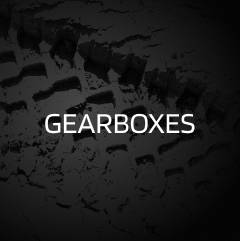 CCA Spares
CCA Spares
Land Rover Gearbox Components – Transmission Case and Gears
In our exploration of the intricate components of a Land Rover gearbox, we begin with a focus on two fundamental elements: the Transmission Case and Gears.
Transmission Case:
Overview: The transmission case, also known as the gearbox housing, serves as the outer shell that encases and protects the internal components of the Land Rover gearbox. This robust housing is designed to withstand the stresses of vehicle operation and protect the gears, shafts, and other vital components from external elements.
Material and Construction: Manufactured from durable materials such as cast aluminum or alloy steel, the transmission case undergoes precise engineering to ensure strength and heat dissipation. The construction is designed to endure the demands of off-road adventures and provide longevity to the entire gearbox assembly.
Functions:
- Protection: The primary function of the transmission case is to shield the delicate internal components from external impacts, contaminants, and environmental factors.
- Rigidity: The rigid structure of the transmission case maintains the alignment of gears and shafts, crucial for the smooth operation of the gearbox.
- Heat Dissipation: Transmission cases often feature fins or cooling channels to facilitate the dissipation of heat generated during operation, ensuring optimal performance.
Gears:
Overview: Gears are the heart of the Land Rover gearbox, responsible for transmitting power from the engine to the wheels at different speeds and torques. The gearbox contains various gears, each serving a specific purpose in the overall gear ratio.
Types of Gears:
- Spur Gears: These are the most common type of gears in a gearbox, with straight teeth that transmit power smoothly and efficiently.
- Helical Gears: Helical gears have angled teeth, providing a quieter operation compared to spur gears and allowing for smoother meshing.
- Synchromesh Gears: Found in manual transmissions, synchromesh gears incorporate synchronizers to facilitate smooth gear engagement.
- Planetary Gears: Often used in automatic transmissions, planetary gears offer a compact and efficient way to achieve different gear ratios.
Functions:
- Speed and Torque Conversion: Gears enable the transmission of power from the engine to the wheels, allowing the vehicle to achieve different speeds and torques.
- Directional Control: The arrangement of gears determines the direction of rotation, including forward gears for propulsion and reverse gears for backward movement.
- Neutral Position: Neutral gears disconnect the engine from the wheels, allowing the vehicle to idle without propelling forward or backward.
- Gear Reduction: Gears provide a mechanical advantage by reducing the rotational speed of the engine to a suitable speed for the wheels.
In conclusion, the Transmission Case and Gears form the foundational components of a Land Rover gearbox, ensuring durability, protection, and the efficient transmission of power. Stay tuned for the next installment as we continue our exploration of Land Rover gearbox components by delving into the Clutch and Torque Converter.
